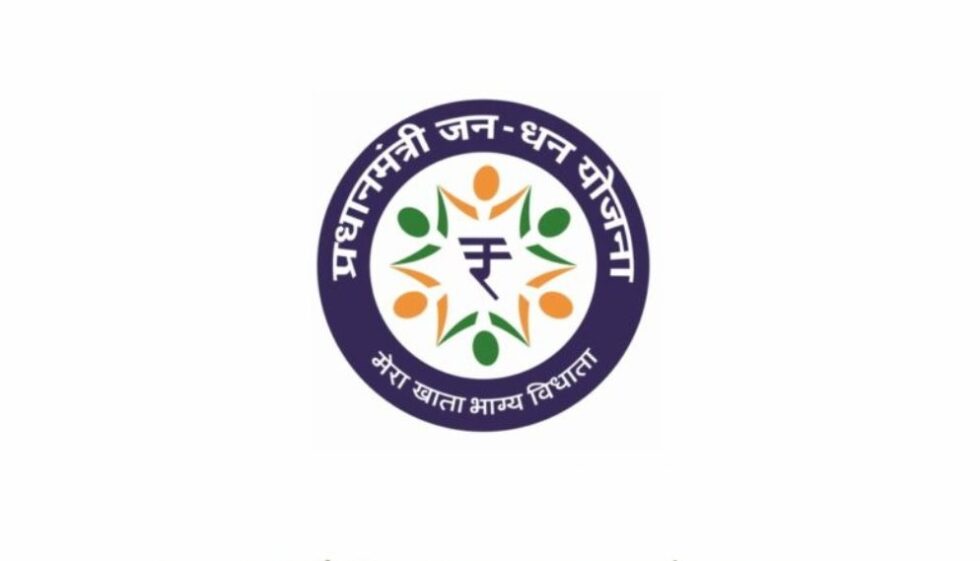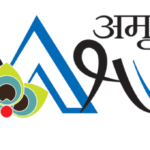
FINANCIAL INCLUSION: How Jan Dhan Yoajana scheme is helping the government to improve on its commitment. The credit must surely go to the hon’ble Prime Minister sh. Narendra Modi and the hon’ble finance minister sh. Arun Jaitley for the same. A report by Brooking Institute confirms this.
The Center for Technology Innovation released the 2015 Financial and Digital Inclusion Project (FDIP) Report on August 26th. The Center is an organization dedicated towards technology innovation policy and is part of renowned Brooking Institute USA. The report has categorically named Pradhan Mantri Jan Dhan Yojana as one of the best scheme towards financial inclusion world wide. To quote directly from the organization,
“India’s national-level commitment to promoting financial inclusion earned it a “country commitment” score of 100 percent. A historic government initiative helped India garner a top score.
[ Reference] (http://www.brookings.edu/blogs/techtank/posts/2015/09/09-fdip-report-results-india utm_source=FB&utm_medium=BPIAds&utm_campaign=FDIPIndia&utm_term=NoNoCtyIN-18^65-BrookingsFansNoCAnoBHV&utm_content=74204795#)
This is indeed remarkable and creditable rating by one of the best think tank globally. The Reserve Bank of India committed to the Alliance for Financial Inclusion as a principal member in 2012. In the 2015 FDIP scorecard, four broad dimensions relevant to financial inclusion: country commitment, mobile capacity, regulatory environment, and adoption of traditional and digital financial services were examined. .
The top-scoring country was Kenya with 89 percent, followed by South Africa (80 percent), Brazil (78 percent), Rwanda/Uganda (75 percent each), and Chile, Colombia, and Turkey (74 percent each), while India stood at 9th position overall.
Highlighting on the Jan Dhan Yojana, as pert of country commitment dimension, the report says,
“In August 2014, Prime Minister Narendra Modi launched the “Pradhan Mantri Jan-Dhan Yojana,” the Prime Minister’s People’s Wealth Scheme (PMJDY). This effort — arguably the largest financial inclusion initiative in the world — “envisages universal access to banking facilities with at least one basic banking account for every household, financial literacy, access to credit, insurance and pension facility,” in addition to providing beneficiaries with an RuPay debit card.”
As we know the Jan Dhan Yojana program has aimed to provide 75 million unbanked adults in India with accounts by late January 2015. As of September 2015, about 180 million accounts had been opened; about 44 percent of these accounts did not carry a balance, down from about 76 percent in September 2014.
The PMJDY initiative is a component of the JAM Trinity, or “Jan-Dhan, Aadhaar and Mobile.” Under this approach, government transfers (also known as Direct Benefit Transfers, or DBT) will be channeled through bank accounts provided under Jan-Dhan, Aadhaar identification numbers or biometric IDs, and mobile phone numbers.
The Pratyaksh Hanstantrit Labh (PaHaL) program is a major DBT initiative in which subsidies for liquefied petroleum gas can be linked to an Aadhaar number that is connected to a bank account or the consumer’s bank details. As of July 2015, about $2 billion had been channeled to beneficiaries in 130 million households across the country.
In terms of physical banking infrastructure, according to the International Monetary Fund’s Financial Access Survey, there were about 12 bank branches per 100,000 people in India in 2013. In 2011, the World Bank estimated formal financial institution account ownership among adults in India at 35 percent. By 2014, about 53 percent of adults had an account at a bank or other financial institution.
The 2014 Global Financial Inclusion (Global Findex) database report notes that by January 2015 (less than six months after the Pradhan Mantri Jan-Dhan Yojana initiative was launched), about 125 million new bank accounts had been opened; however, about 72 percent of the accounts did not show a balance. More time is needed to determine whether and how these accounts will be utilized. One positive trend is that between January 2014 and December 2014, the highest rate of increase in bank account ownership was among women, particularly those below the poverty line.
Current guidelines, such as those for payment banks, and the overall JAM framework (Jan Dhan-Yojana, Aadhaar and Mobile numbers) are expected to facilitate a more enabling environment for digital financial services by allowing a multiplicity of providers to offer innovative financial services to under-served populations.
A 2014 report noted that the government also implemented its commitment to digitizing government-to-person payments in part by “depositing government pension and scholarship payments directly into the bank accounts of almost 250,000 people in 20 districts. Further digitization of government payments could benefit both the government and recipients alike, as some sources project the government could save over $22 billion a year by paying subsidies for services like health care and education directly.
Some concerns in the Financial Inclusion scheme:
Mobile services are an important part of financial inclusion programs the world over. Therefore, a second related dimension is therefore mobile capacity, which includes indicators that measure mobile infrastructure and adoption as well as indicators specific to mobile money. The Financial and Digital Inclusion Project (FDIP) in its report 2015, assessed the extent of 3G mobile network coverage and the degree of unique mobile subscribership. With respect to mobile money, the availability of mobile money-enabled P2P payments, bill payments, and international remittances, as well as the number of deployments, or active mobile money services, within each country were considered..
South Africa achieved the highest ranking for mobile capacity ( In a select 21 grouped countries) with the percentage of unique subscribers comprising about 70 percent of the population and about 96 percent 3G mobile network coverage by population.
Whereas India received 16th place ( out of the 21 countries considered, and behind Pakistan) in the 2015 FDIP Report and Scorecard’s mobile capacity ranking. With over 900 million cell phone subscriptions in 2014, India had the second-highest number (after China) of mobile phones subscriptions in the world. As of 2014 the mobile penetration rate in India was about 74 subscriptions per 100 person. ( Mobile capacity and Mobile penetration are two different factors).
Another — and, since a single person can have multiple subscriptions, not necessarily inconsistent — 2014 figure provided by the InterMedia survey indicated that as of December 2014, 52 percent of survey respondents in India owned a mobile phone. An additional 34 percent of adults could access a mobile phone they did not own, bringing the total share of adults with access to a mobile phone to about 86 percent.
While India has not made commitments under the Maya Declaration, it did commit to the Financial Inclusion Strategy Peer Learning Group within the Alliance for Financial Inclusion. The Reserve Bank of India (RBI) and government of India are the primary institutions involved in the push for financial inclusion.
Large-scale financial inclusion programs in India arguably accelerated in the mid-2000s, when the RBI called on banks to “provide basic financial services in all unbanked villages in two phases: first, to all villages with a population of at least 2,000 and, second, to all villages with a population of less than 2,000.
Banks, used a combination of new branches, fixed location business correspondent outlets, and mobile-technology based banking correspondents to meet this target. More recently, initiatives such as JAM are focusing on incentivizing use of traditional banks while also emphasizing the use of digital channels as mechanism for providing access to financial services among those previously excluded from the formal financial sector.
In 2012, under the Direct Benefit Transfer program, the government of India decided to transfer social welfare benefits directly to beneficiaries’ bank accounts using the Aadhaar unique identification (UID) number, which is linked to individuals’ bank accounts. The PaHal (Pratyaksha Hastaantarit Laabh) program, a direct benefit transfer program to facilitate consumer access to liquid petroleum gas, is the first direct benefit transfer program of India’s new government and disbursed about $2 billion to around 130 million beneficiaries as of May 2015.
Another important scheme within the financial inclusion scheme of India was the Aadhar scheme.
The Unique Identification Authority of India (UIDAI)’s Aadhaar program is continuing the process of assigning identification numbers to all citizens; each number is linked to biometric data, including a photograph, iris scans, and fingerprints.67 These identification numbers and the borrower’s credit history could potentially be linked to the Aadhaar Enabled Payment Systems to facilitate greater transparency and reduce information problems in the credit market.68 The system is “a bankled model which allows online interoperable financial inclusion transaction at PoS [point-of-sale] through the business correspondent of any bank using the Aadhaar authentication.
These transactions include balance inquiries, cash withdrawals and deposits, and “Aadhaar to Aadhaar funds transfer.
As of December 2014, “over 720 million citizens had been allocated an Aadhaar card.”71 Because Aadhaar numbers are linked to bank account numbers through the Aadhaar Payments Bridge (APB) system, government departments can disburse payments to consumers using the APB.
Beyond government recognition of Aadhaar as an enabler for the shift from in-kind to direct cash transfers, another benefit of the program related to digital financial inclusion is that since Aadhaar registrations include the customer’s mobile number, this could offer another platform for direct Aadhaar-based transfers.
In August 2014, Prime Minister Narendra Modi announced the PMJDY program. This initiative aims to provide at least one bank account to every household, develop an insurance scheme for the poor, facilitate financial literacy and access to credit, and foster other initiatives to promote financial access and adoption among the under or unbanked.
The plan will be implemented in two phases. The first phase took effect immediately after the announcement and aimed to ensure universal banking within a year, and the second phase will begin one year from the announcement of the scheme and seek to provide insurance and pension opportunities to those without them by August 14, 2018.
In addition to a bank account, each account holder will receive a debit card (RuPay card) and a 1 lakh (100,000 rupees) in insurance coverage. The plan is complementary to the RuPay program implemented by the NPCI in May 2014, which seeks to enable ATM withdrawals and electronic payments at all banks and financial institutions in the country.
Conclusion:
With the government under the leadership of Prime Minister Narendra Modi has clearly taken the lead towards financial inclusion, a number of concerns remain.
Mobile connectivity to the last men has still to be achieved. Rishabh Khosla and Vikas Raj of the Center for Financial Inclusion have written that although India’s financial inclusion mission is “an exciting vision, it does not address a seeming lack of consumer interest in traditional banking products and services: numerous government and non-profit initiatives have focused on opening bank accounts for the poor, which then see little or no use.
CLEARLY THE GOVERNMENT NEEDS TO DO MUCH MORE THAN OPENING JAN DHAN YOJANA IF ITS SERIOUS ABOUT FINANCIAL INCLUSION PROGRAM FOR EVERY CITIZEN OF THE COUNTRY. THE JAN DHAN YOJANA HIS DOING ITS JOB OF OPENING BANK ACCOUNTS BUT THE REAL PROFITS OF THE SCHEME WILL COME WHEN PEOPLE START USING THESE BANK ACCOUNTS IN ALLIANCE WITH MOBILE PAYMENT OPTIONS AND ARE COVERED FOR VARIOUS GOVERNMENT LARGESS AND SCHEMES.
*** Reference and extracts from: http://www.Brookings .edu and the FDIP report 2015.
http://www.Samanvaya.in Under construction
Send your feedback and Suggestions
0

